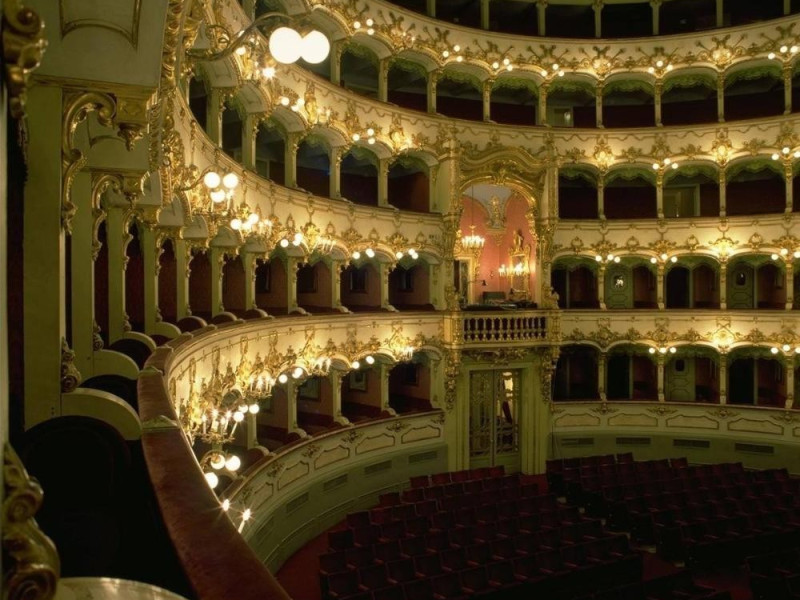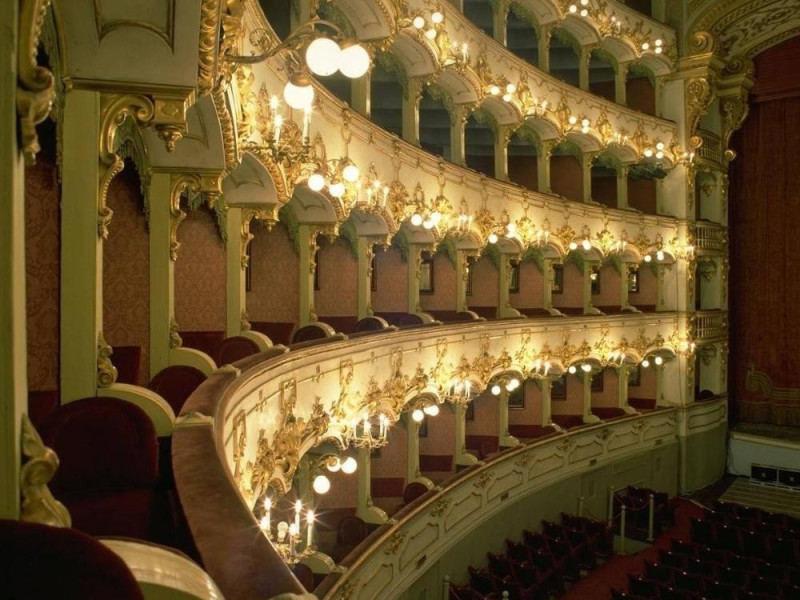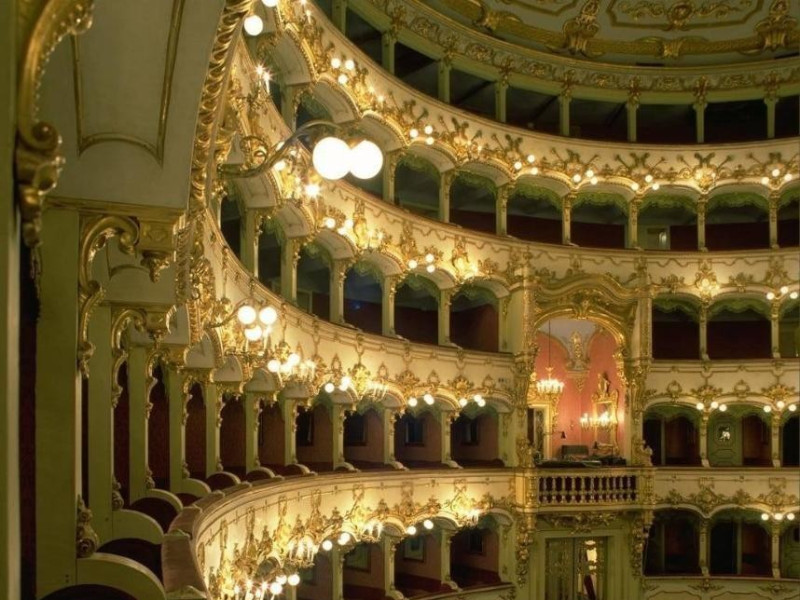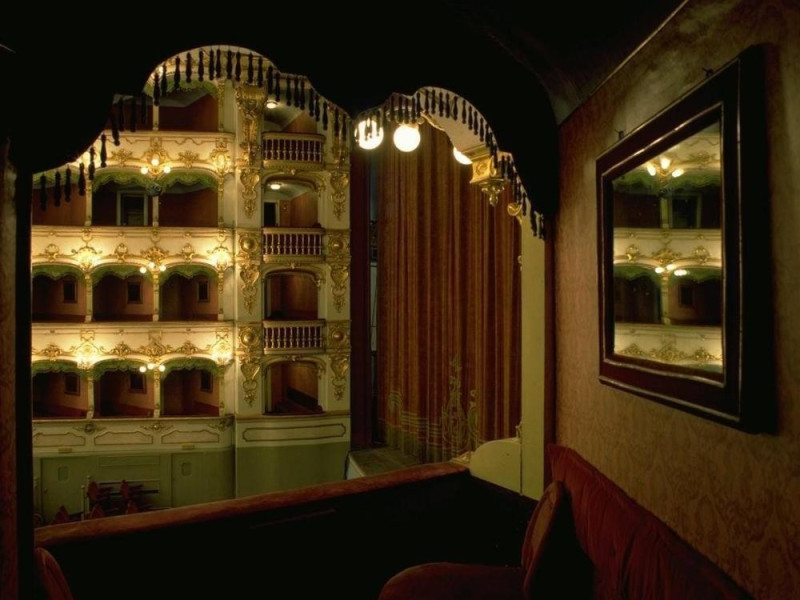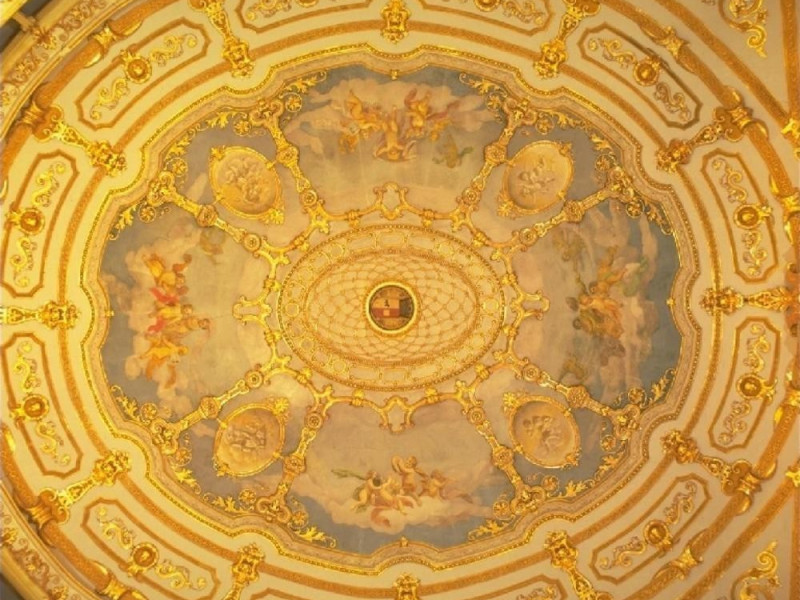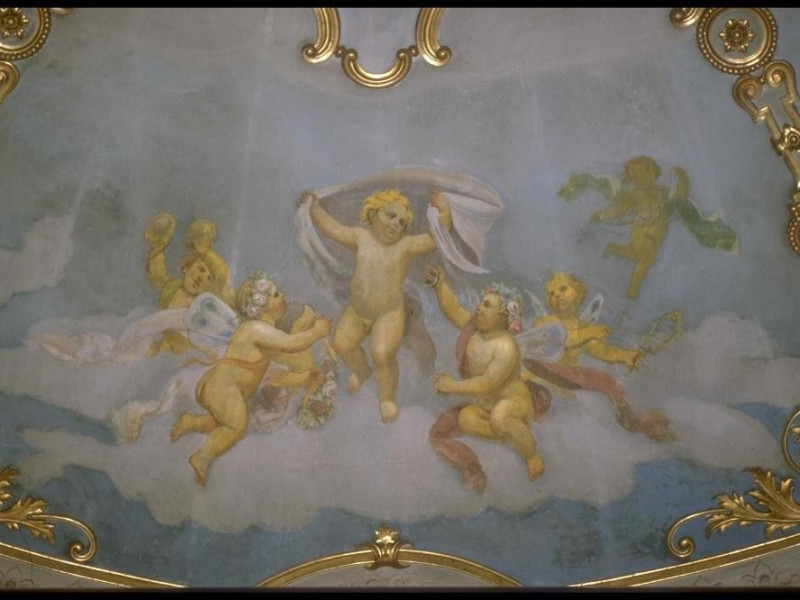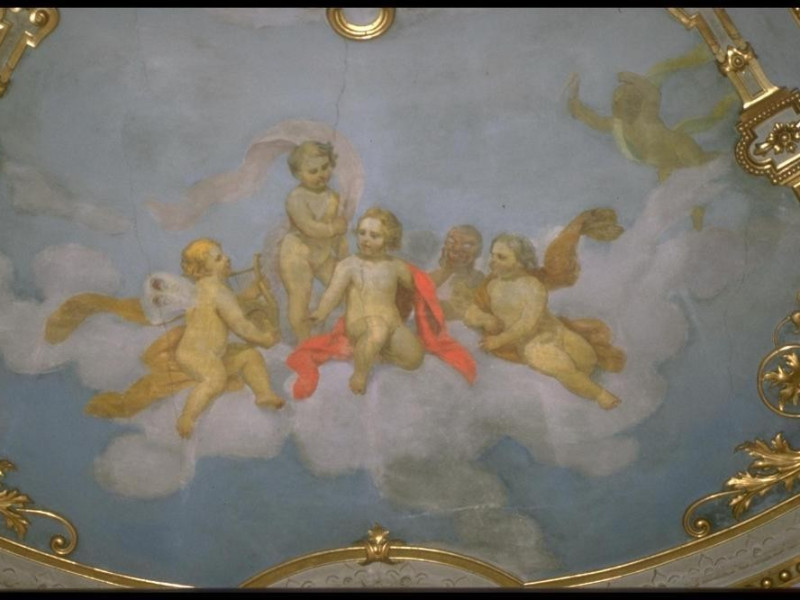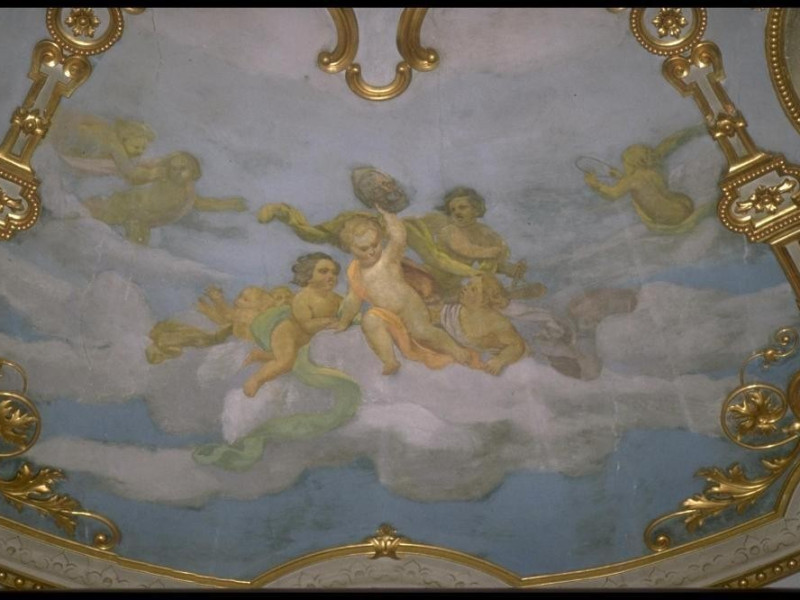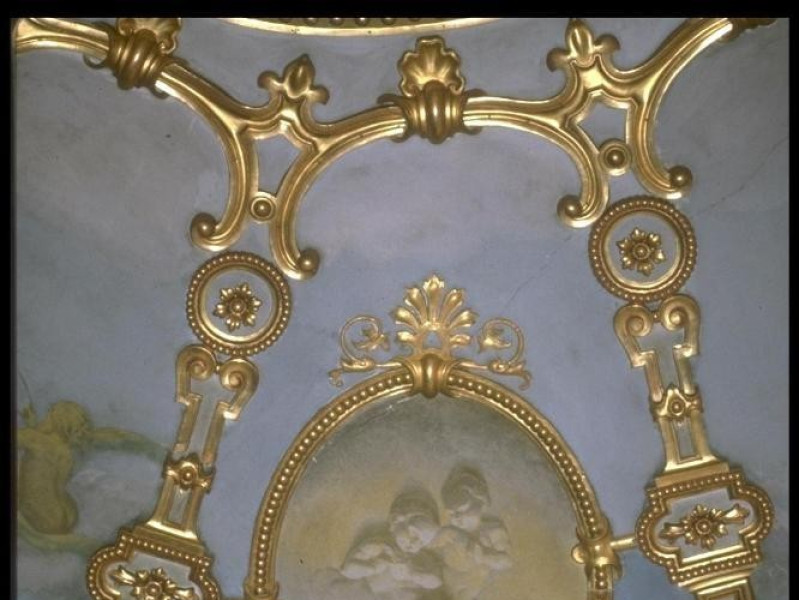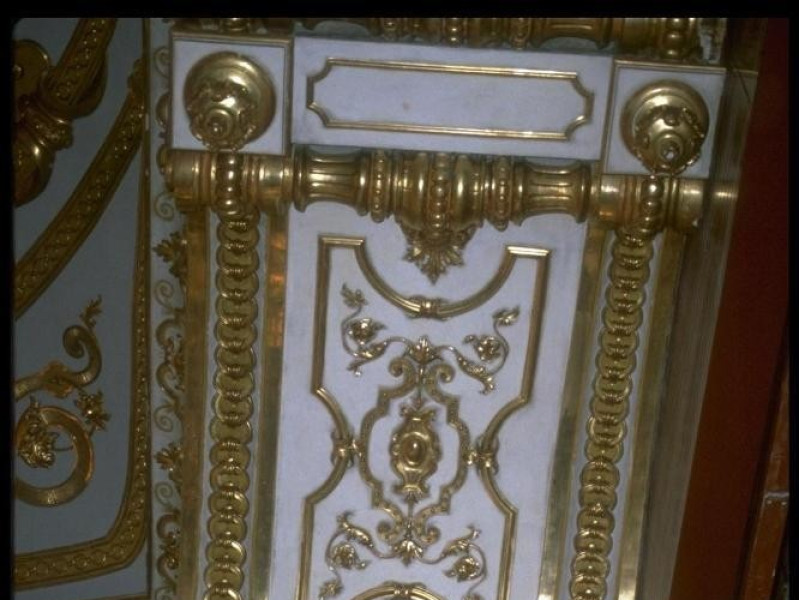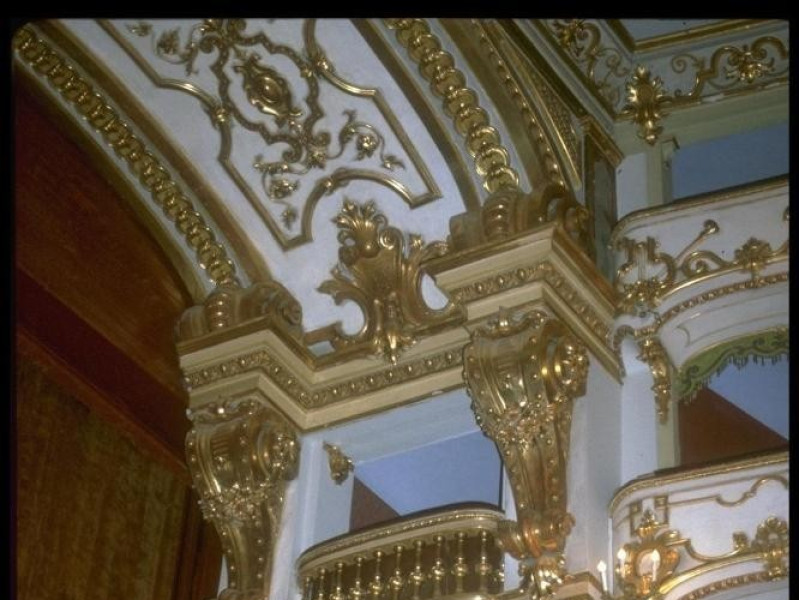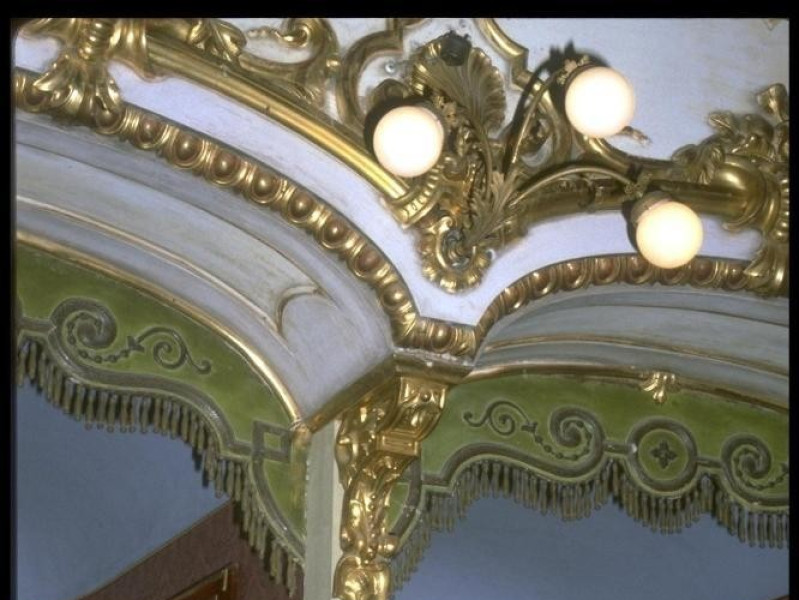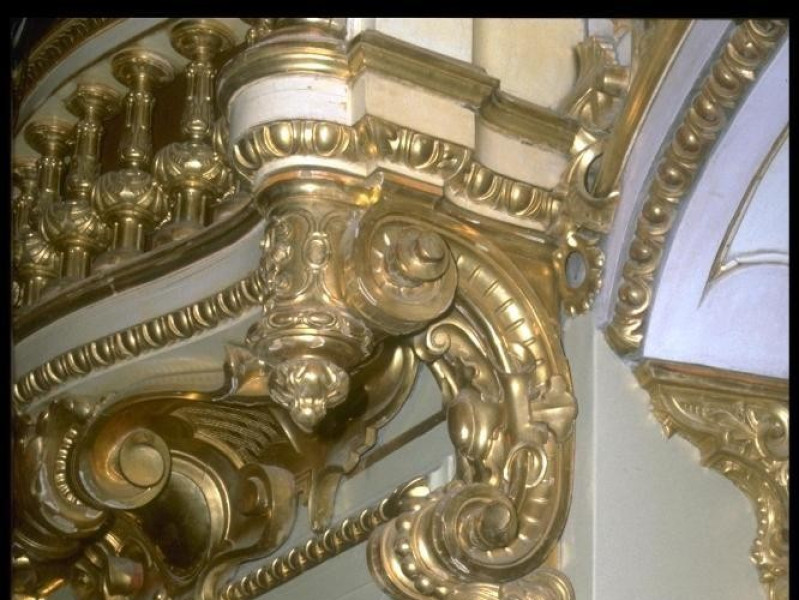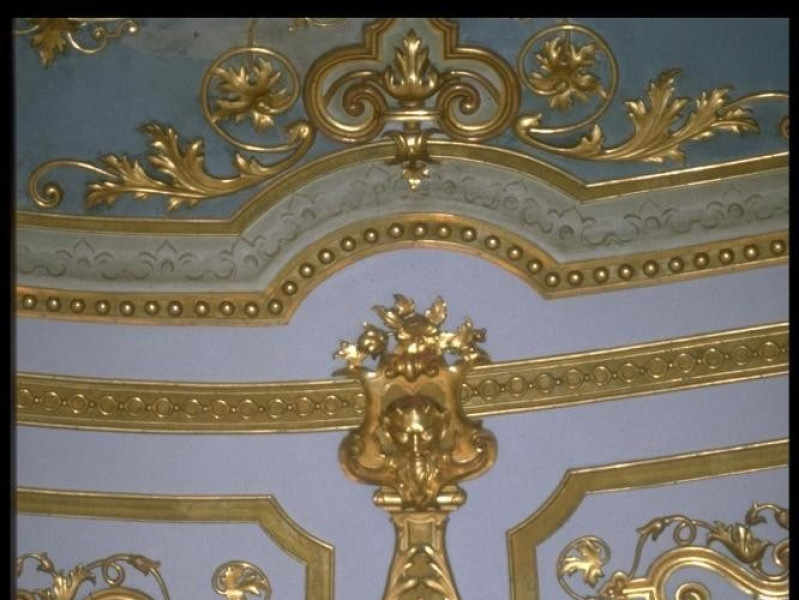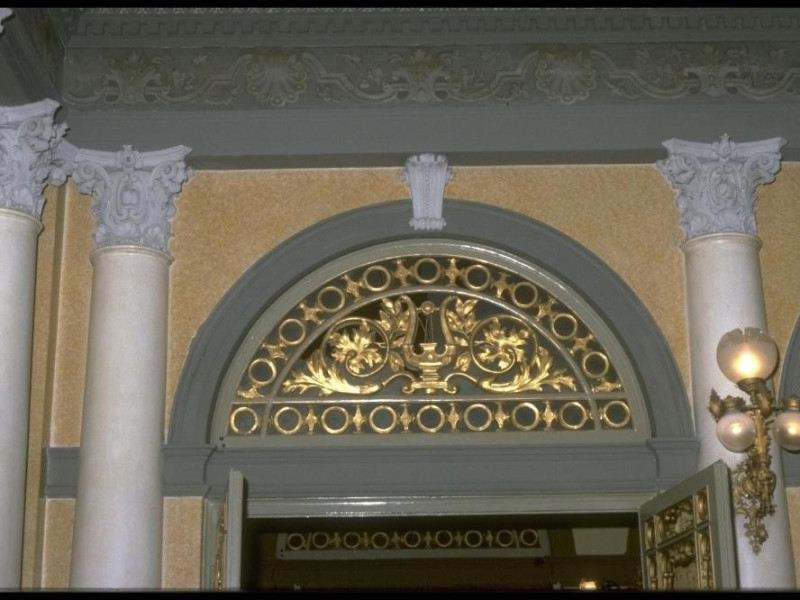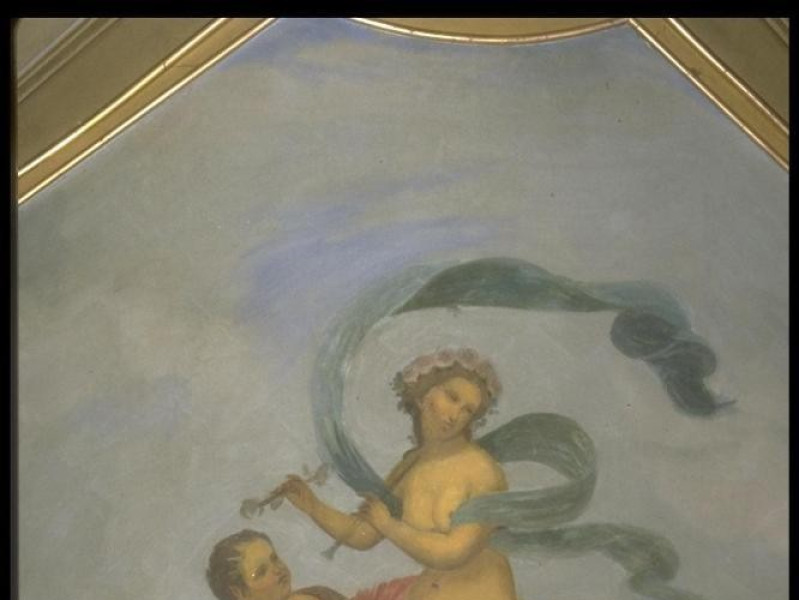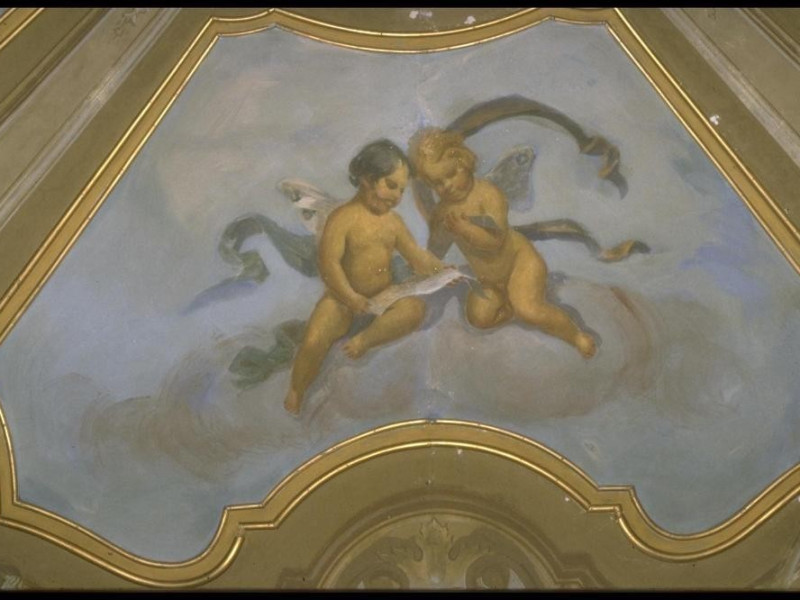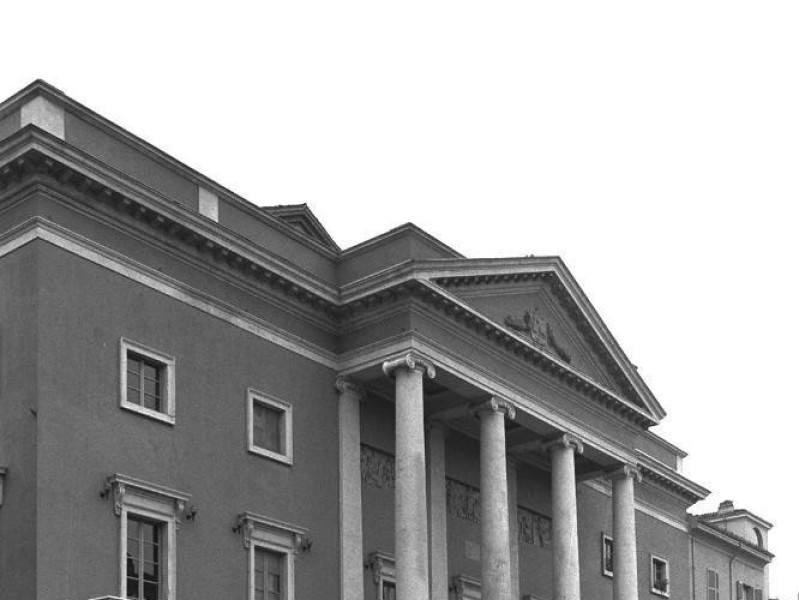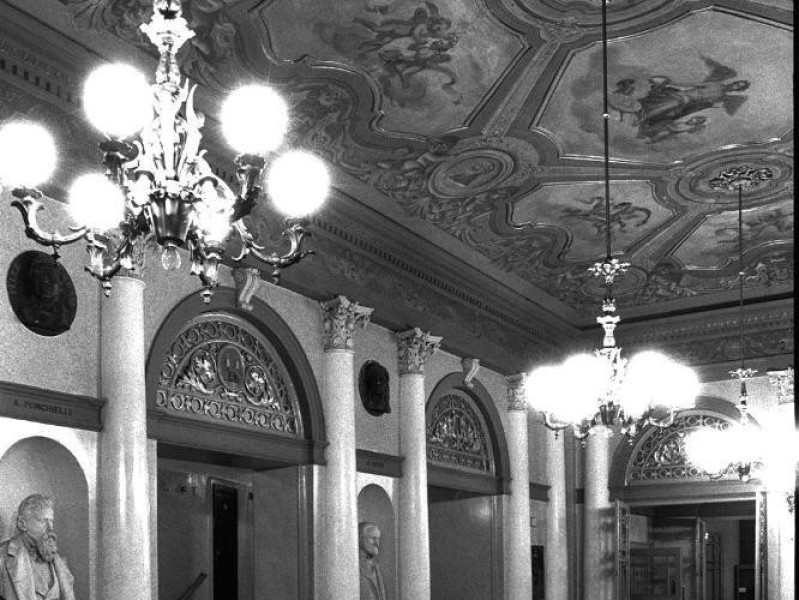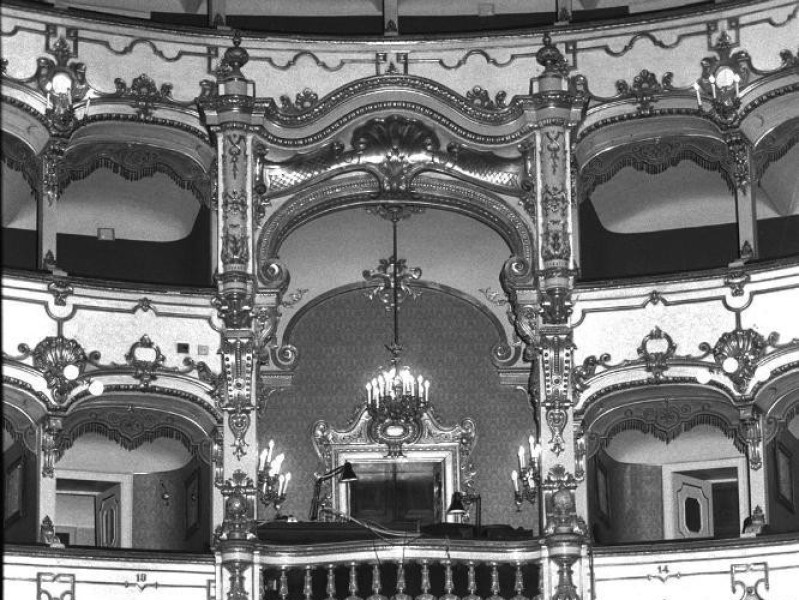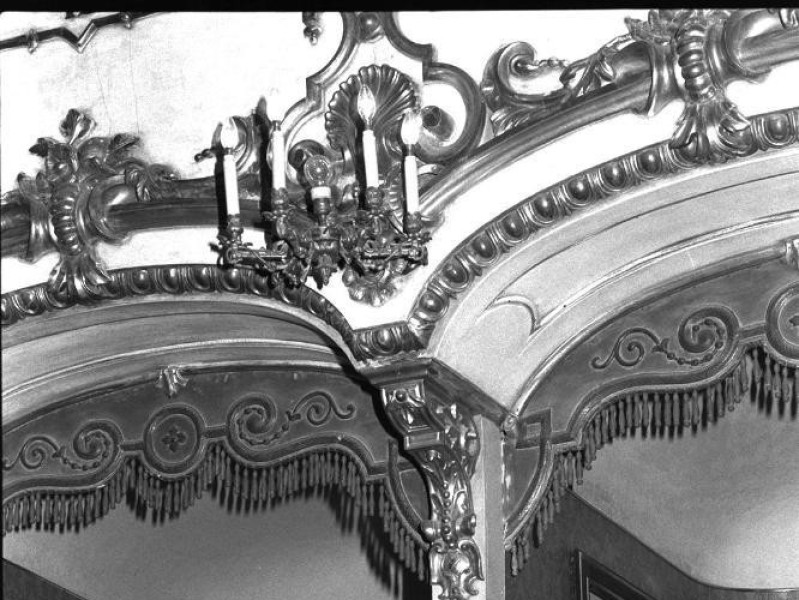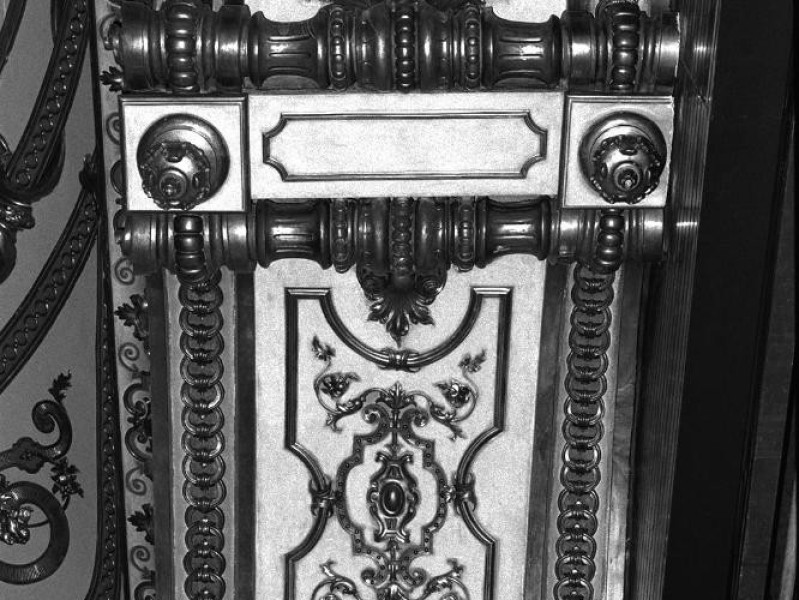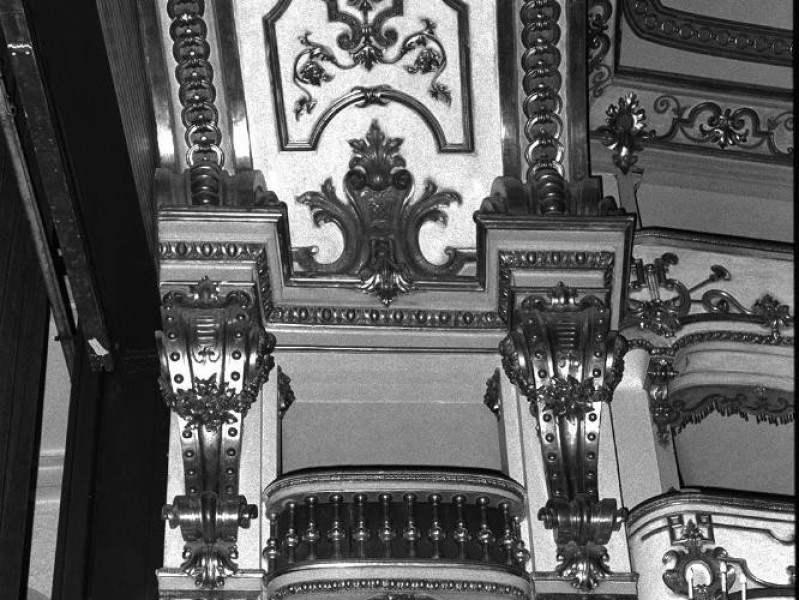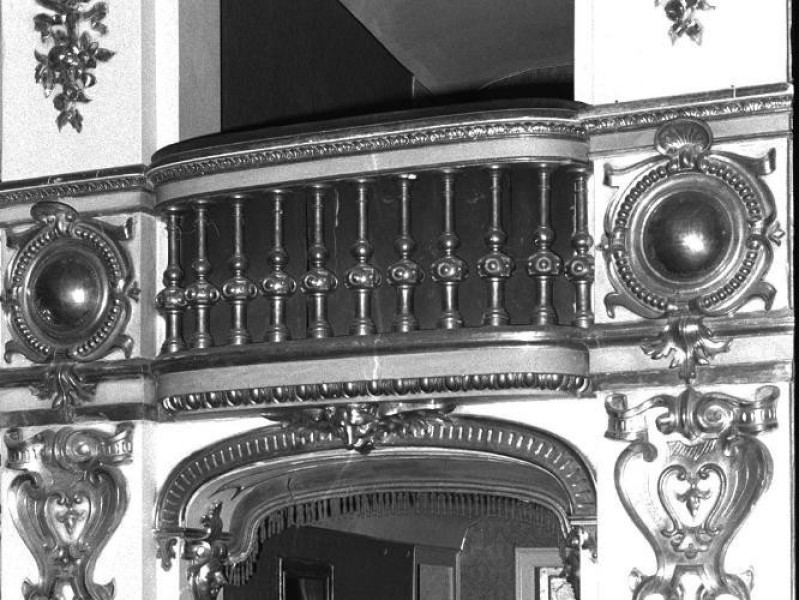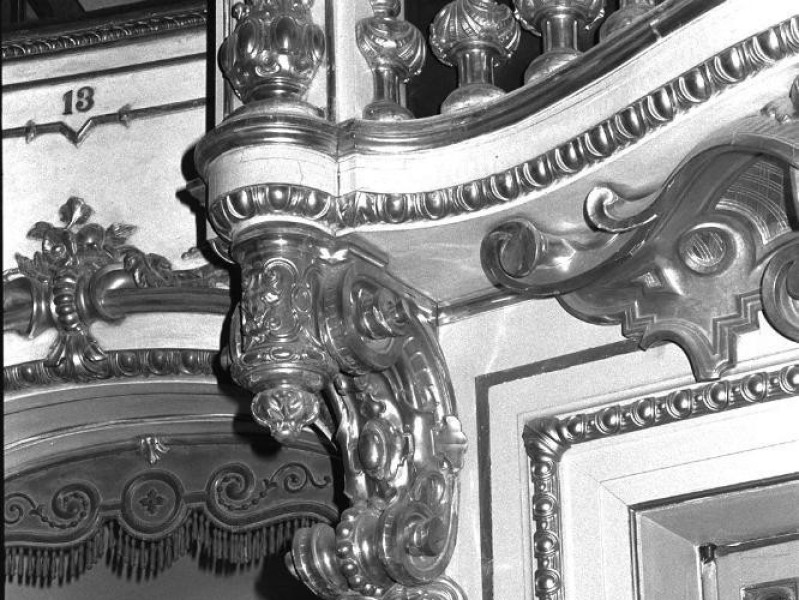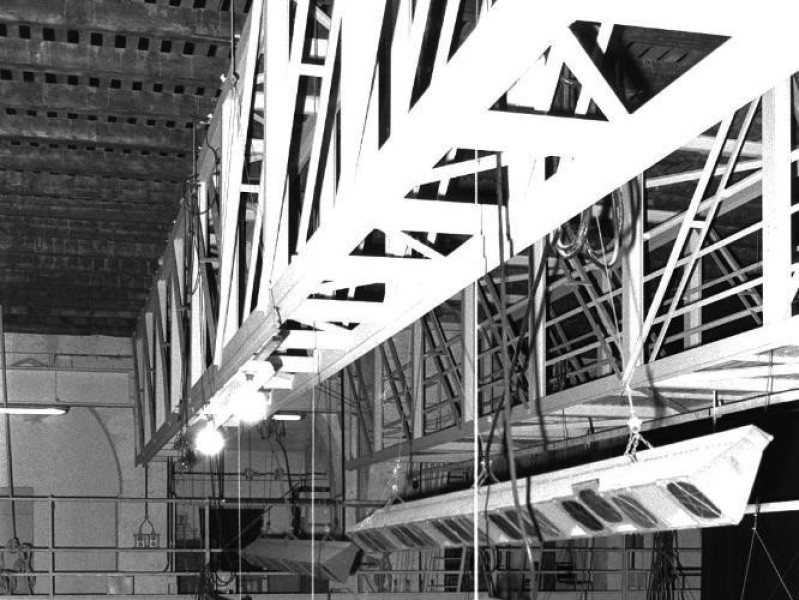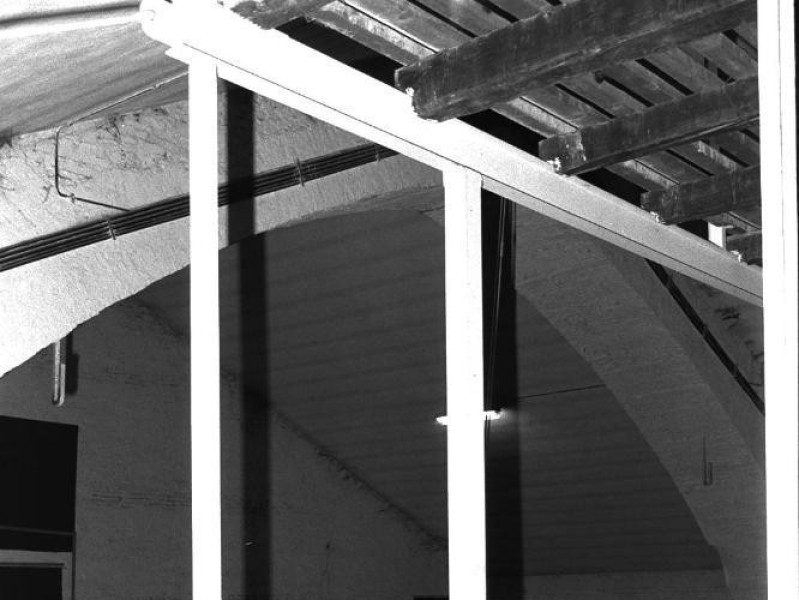Teatro municipale
The Ducal Theatre of Saline, generically referred to as "small" or "comedy", was built in August 1593, with the help of a Piacenza wealthy merchant: Pietro Martire Bonvino. To this end were suitably adapted spaces placed in the upper part of a building, used the ground floor in salt warehouse and duty, located near the church of San Protaso, long since disappeared, not far from the Square of the Horses, at the corner of current Via Romagnosi and Via Cavour. There was no change or decorum that indicate outside the occurred adaptation, it seems that he had maintained the appearance of a fortress, complete with a massive surviving battlements. Are more documented the interior thanks to sharp plants, preserved at the Library Passerini Landi of Piacenza and processed in 1758 by Francesco Zanetti in charge of the restoration of the theater, which was declared unsafe since 1746, another plant is kept at the State Archives Parma, background maps and drawings, 23/35, dated February 21, 1743. The theater, of small size, had the dining plan with a "U", stalls and three tiers of boxes stacked, the first of which rests on a theory of wooden columns. Each order was made up of twenty-six lodges, in addition to the ducal a final order, said "swifts", was intended for the common people. The stage was quite small and lacking adequate for the needs of local representations and actors, as well as space for the orchestra, while there were services for the public such as, for example, an inn adjacent to the auditorium and a cafe on the first order. Nothing is given, however, to know beyond the particulars relating to the purely architectural structure, that is, for example, whether or not it had plastic or pictorial decorations. It was definitely active until 1804 and, from a valuation prepared by Lotario Tomba three years later, is still in fair condition conservative. The origin of the Ducal Theatre of Gothic Palace, dates back to May 1644 when, during the celebrations for peace between the duke Odoardo and Pope Urban VIII, between events organized particular importance was the preparation, in the Hall of the Palazzo Comunale said still the "Gothic", the tragicomedy the fake mad Giulio Strozzi music by Francesco Sacrati with the execution of the Academics Febiarmonici. Most likely, it was the first staging of a drama in music in Piacenza; and the success of the initiative urged the idea of building in the hall of this building a real theater. The idea became a reality in 1646, under the direction of Christopher Piacenza Rangoni, said "Ficcarelli", when it was set up this theater hall. With its four tiers of boxes, wooden faux marble, decorated with figures and stucco and gold colors and with a curtain in solid plank on which apparently was depicted the city of Piacenza vague color and rich in gold, light of lights, a stage setting equipped with machines to satisfy the complicated staging seventeenth century. Among the most sensational theatrical events is to remember the preparation of "Coriolanus" by Christopher Ivanovich, in May 1669, on the occasion of public festivities took Ranuccio II to honor distinguished guests. The Theatre called "Citadel" would, in time, the third ducal theater of Piacenza. Was probably made in the second half of the seventeenth century in the building place alongside the incomplete Rocchetta Visconti, connected to the adjacent Palazzo Farnese by an overpass. Also was practically contiguous to over three hundred shops wooden built by Ranuccio II for the treatment of goods in time of foreign exchange Fairs and merchandise. Even in this theater are known the essential characteristics and the distribution of space thanks to the plants designed by Zanetti in 1758: larger and better organized than the Teatro delle Saline, room had a usual U-shaped elongated by soft curves to all sixth, five tiers of boxes, the last of which told the usual "swifts" corresponded to today gallery, there were ancillary spaces for the public which the reduced and coffee. The large stage was equipped with the necessary facilities, rooms for the actors tailoring. At the end of the eighteenth century the Teatro delle Saline was now dilapidated though still used, while the Citadel was still be the most important and aristocratic place for public shows. The city will remain free on Christmas Eve of 1798 when a violent fire completely destroy this theater. He was first a certain Pietro la Boubé, French citizen enriched in Piacenza thanks to shrewd speculation, to ask the government for permission to build a new theater enclosing a draft drawn up by architect Lotario Tomba. For many reasons this initiative did not succeed, was instead a society composed of five Piacenza patricians to obtain, in August 1803, by the General Moreau de Saint-Mery consent to build a new theater. It was built on an area occupied by the Landi Pietra Palace at the intersection of the current Via Giordani and West Street, near San Antonio. The construction of the new theater was conducted in a very short time, a year or so, and although no facade and ornate interior not entirely in keeping with the elegance of its structure, was inaugurated on September 10, 1804 with the serious drama for music "Zamori", the "Hero of India", with a libretto by Luigi Previdali and music - specially composed - John Mayer and Simone with the 'dance heroic' Emma, that the judgment of Charlemagne, Joseph Ranzi. The theater has a room elliptical, the best suited to the needs acoustic and visual, four tiers of boxes and a gallery, while structurally it is characterized by the presence of large arches acute, probably a ploy adopted by Tomba to decrease the lights and counterthrusts equal vertical development. In 1826, under the leadership of Alexander Sanquirico were undertaken substantial work of interior decoration and was painted a curtain now lost. In 1830, the same Sanquirico completed the facade, inspired, also expressed the desire of the clients at La Scala in Milan. In 1857 he was commissioned to architect Paolo Gazzola cure further restoration work of considerable extent, in particular the roof was rebuilt and enlarged the room above the auditorium obtaining a space for use by painters, designers, were also built from scratch forty ancillary rooms while others were expanded. Great attention was also directed to the decorations: under the direction of Girolamo Magnani the turn of the hall was again painted in collaboration with Paolo Bozzini, were also redone decorations atrium entrusted to Gaetano Albertelli, scales, as well as those in stucco and the gilding of the proscenium and stage, giving environments that aspect aesthetic that still retains. The old wooden structures such as the roof, the stage and the tooling now lost, were rebuilt by Giuseppe Mastellari, machinist of the Regio of Parma. In 1938-1939 were shot down the partitions of the third and fourth tier of boxes to create two floors of galleries. The winches, drums and wooden trellises were shot down in a restoration of 1970 at which it was replaced the wooden roof with a brick. In the restoration of 1976-1979 the scenery workshop was turned into auditorium for lectures and concerts, improvements were made in the operation rooms. Among the ancient music furniture, remains only an organ purchased in 1836 by brothers Serassi of Bergamo. Recently, the theater was again the subject of a major renovation. In spring 2001, on the occasion of the centenary of the death of Giuseppe Verdi, the Hall of the Municipal Scenographers exceptionally hosted two exhibitions. An exhibition of paintings by Pietro Fornari who, inspired by the works of the Master, portrayed heroes and heroines known and unknown of the Verdi repertoire. To this was followed by an exhibition of graphic works by Giancarlo Braghieri inspired by the music of Verdi. Is permanently exhibited in the coffee instead of the theater "Portrait of woman with three roosters", a large painting of 1950 by Luciano Spazzali.
